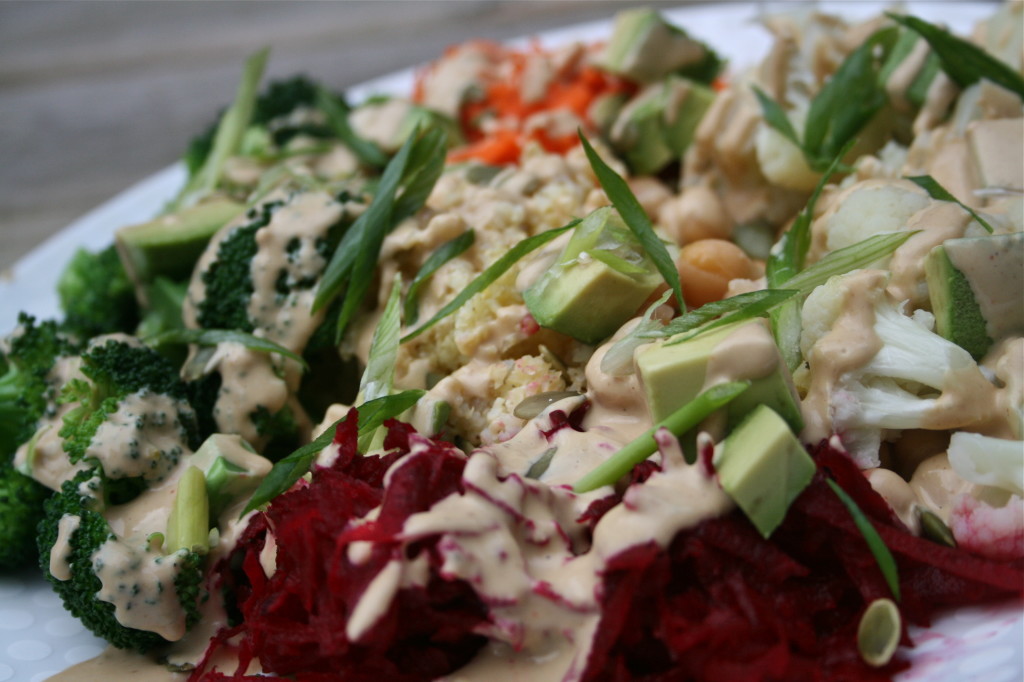This is a blue print of a well-rounded plant based meal that can give full nutritional support to vegans and vegetarians as well as major benefits to omnivores, especially those that do not regularly have vegetarian meals. Making big batches of millet (or brown rice or quinoa) and having cans of beans or lentils on hand can make this easy to throw together over a few consecutive days with some fresh vegetables.
Some of my fondest childhood memories of feeding birds with my grandpa contain millet, although I did not realize it until recently. Millet is the small round bits in bird feed that look like large grains of sand. It is also really great for humans. Being a nonglutenous grain with decent protein levels it is similar to quinoa, but it is not as popular yet so it is way cheaper, and it is actually the most alkaline grain, making it the least potentially congesting. Some of its main health benefits come from its high amounts of fiber, B vitamins, iron, magnesium and potassium. I find it really easy to digest and it is becoming one of my staple healthy comfort foods.
Maintaining adequate protein levels in vegetarian or vegan diets is definitely possible but it requires more forethought and planning. Protein is made up of amino acids, several of which are deemed “inessential” because our body can make them and several of which are “essential” because they need to be obtained through the diet. I like to think of them as blocks of Lego, each with a different color, and when put together they make a strong wall with no pieces missing. Animal sources of protein generally have all 8 essential amino acids, so no balancing is required. Most plant sources have only some of what is required so they need to be paired with complimentary sources. Generally, most grain and legume combinations like beans and rice, or in this case millet and chickpeas will provide all that is needed. Recent research is suggesting that it is adequate to simply consume a range of plant proteins throughout the day, and not all in one meal but in cases of deficiencies, illness or pre or post surgery it is better to err on the side of caution because the body needs higher levels of protein to rebuild its tissues and support its immune system.
Two common deficiencies among vegetarians, which is heightened in vegans is zinc and vitamin B12- both of which can be tricky to find in easily absorbable forms from plants. Pumpkin seeds are an excellent source of zinc and nutritional yeast is a reliable source of B12, since both are natural foods with lots of other nutrients the body usually absorbs and assimilates them well. Cayenne pepper and apple cider vinegar are both really cleansing and supportive of good digestion so I like to throw both of those ingredients in too.
- 1 cup broccoli, chopped into bite sized pieces
- 1 cup cauliflower, chopped into bite sized pieces
- ½ cup cooked millet
- ½ cup chickpeas
- ½ avocado, cubed
- 1 small carrot, grated
- ¼ cup beet, grated
- 1 tablespoon green onion, sliced thinly
- 1 tablespoon raw pumpkin seeds
- Dressing
- 2 tablespoons cashew butter (or almond or peanut)
- 2 tablespoons water
- 1 tablespoon nutritional yeast
- 1 tablespoon raw apple cider vinegar
- 1 dash each of sea salt, black pepper and cayenne pepper
- Set up a double broiler on the stove over medium high heat and once the water is boiling, add the cauliflower and broccoli to steam for 5 minutes. Mix all the dressing ingredients until thoroughly combined. Place everything in a large bowl and drizzle the dressing over top.

